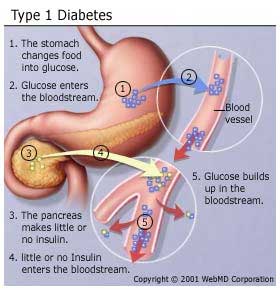 |
Diabetes and its Current Treatment MethodsDiabetes is a devastating disease that accounts for 3.8 million deaths every year. A diabetic’s body can no longer produce insulin, a hormone necessary for processing glucose. Glucose is needed for energy, and so without a supply of insulin, a diabetic will die. There are two types of diabetes.
With no way of producing insulin, a type 1 diabetic will starve to death without a constant external supply of insulin. To make matters worse, insulin must only be injected at the right time, when glucose levels are high. Type 2 Diabetes In advanced cases, type 2 diabetics also have to rely on artificial insulin. If diabetes isn’t managed well, and a diabetic frequently has too much glucose in their blood (known as hyperglycemia), it will cause dangerous secondary complications that could result in blindness, heart attack, stroke, and amputation.
An insulin pump can supply a constant drip feed of insulin through a needle in the skin, replacing the need for injections. With all but the newest pumps, a diabetic still needs to draw blood frequently to monitor their glucose level and then change a dial on the pump to tell it how much insulin to supply (such as the teenager on the right is doing). The MiniMed Paradigm REAL-Time System, released in 2006, was the first system to integrate an insulin pump with a continuous glucose monitoring device, thus eliminating the need for diabetics to monitor their own glucose level. Unfortunately, this system is extremely expensive which prohibits use. |
 Type 1 Diabetes
Type 1 Diabetes
 Diabetes can be managed but not without inhibiting a diabetic’s ability to live a normal life. In type 1 diabetes, as well as in progressed cases of type 2, it’s essential that a diabetic accurately
Diabetes can be managed but not without inhibiting a diabetic’s ability to live a normal life. In type 1 diabetes, as well as in progressed cases of type 2, it’s essential that a diabetic accurately